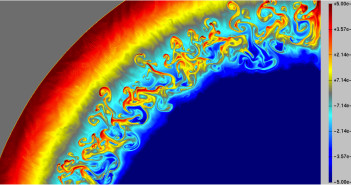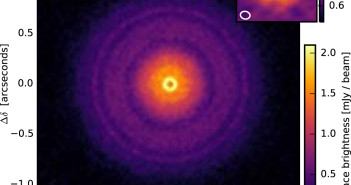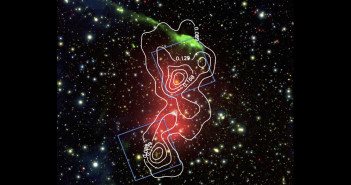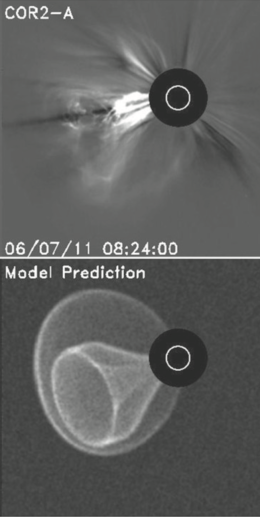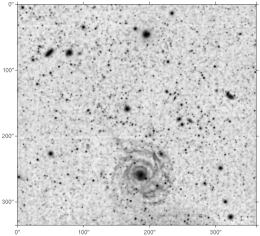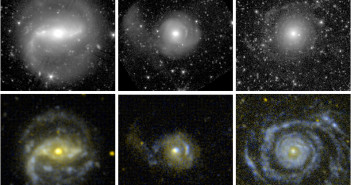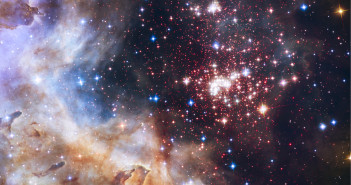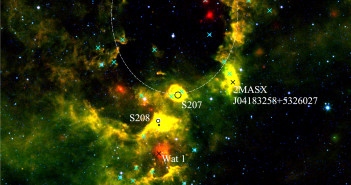
Featured Image: A Bubble Triggering Star Formation
This remarkable false-color, mid-infrared image (click for the full view!) was produced by the Wide-field Infrared Survey Explorer (WISE). It captures a tantalizing view of Sh 2-207 and Sh 2-208, the latter of which is one of the lowest-metallicity star-forming regions in the Galaxy. In a recent study led by Chikako Yasui (University of Tokyo and the Koyama Astronomical Observatory), a team of scientists has examined this region to better understand how star formation in low-metallicity environments differs from that in the solar neighborhood. The authors’ analysis suggests that sequential star formation is taking place in these low-metallicity regions, triggered by an expanding bubble (the large dashed oval indicated in the image) with a ~30 pc radius. You can find out more about their study by checking out the paper below!
Citation
Chikako Yasui et al 2016 AJ 151 115. doi:10.3847/0004-6256/151/5/115

